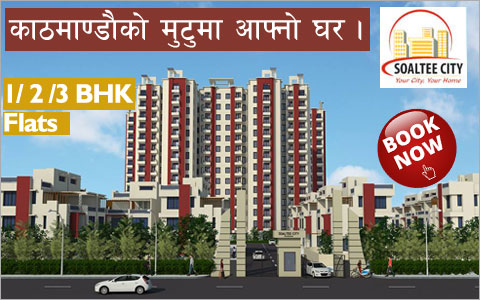National News

Speedy urbanization of Kathmandu Valley in recent years has become a matter of concern for the sports sector, as playing grounds are rapidly turning into mega-construction sites for shopping malls or multi-storey apartment buildings.
That is not the sole worrisome trend; the tepid pace of construction of new sports infrastructure is greatly at odds with the growing number of sports aspirants and has reduced the availability of sports infrastructure for players.
Former national badminton champion Pratap Adhikari says he hasn´t seen any development in sports in terms of infrastructure since the last few decades. “All that we have today was built a long time back with foreign assistance,” said Adhikari, who is now vice president of Nepal Badminton Association.
Adhikari considers himself fortunate to have had plenty of space for playing badminton in his childhood days. “Now there is no such space for upcoming players and all you see on those playing fields are tall concrete structures,” he said.
All the sports heroes of their time have no hesitation in blaming successive governments for their apathy toward sports. How can you expect to see new sport fields and infrastructure when the government´s investment in sports infrastructure is almost nil, asked football analyst Sanjib Mishra.
“Most of the existing infrastructure is about three decades old. The authorities have not even maintained them properly,” said Mishra.
Migration of people from the rural areas in large numbers is causing a problem of space in the capital. Mishra, who is also development director of All Nepal Football Association (ANFA), believes this trend can be reduced if rural folks find proper facilities in their own native places.
“Players are also coming in from outside the Valley. The government must adopt a policy to develop infrastructure outside the Valley,” he opined.
The consequences of population growth in the capital are visibly felt in the sports sector.
“The capital is getting congested. There is only one covered hall at Dasharath Stadium and we have to wait for our turn to practice,” said Adhikari.
The covered hall hosts trainings for badminton, basketball, wushu and also tournaments in boxing.
Lack of space for physical sports is also making kids glue themselves to computer games and the internet. Such indulgence can be avoided if children are engaged in sports. Mishra says getting youngsters interested in sports can help them stay away from drugs.
“Although playing computer games is not bad compared to taking drugs, it makes a person stay put in one place for a long time. Sports on the other hand helps the physical as well as mental development of a person,” said Mishra.
Adhikari says that children can change their habits if there is a favorable environment. “Sports halls and multi-complexes should be built for them. This is possible if private schools and the government join hands. But sadly, the private sector is business-oriented and the government lacks concern,” he said.
The government has no solution for the demographic change that the capital has witnessed. Sports analysts say that decentralization could possibly address the problem but the government has no policy regarding that.
source: Roy, N.C. (2010),"Valley urbanization squeezing out sports ",republica, 21 October 2010
- 9th Nepal Buildcon International Expo 2024
- Real Estate Expo 2023
- NRB raises housing loan limit to encourage home constructions
- Nepal Rastra Bank (NRB) Monetary Policy 2080-2081
- New Price of Land in Kathmandu Metropolitan City, Nepal
- Capital Gains Tax Rate on Real Estate Transactions in Nepal 2080-81 ( 2023/24 )
- Kathmandu metropolis implements free parking policy for commercial buildings and hospitals

![[X]](https://www.housingnepal.com/images/popup-close-button.png)






























































































































































































































































































































































































 Facebook
Facebook
 Delicious
Delicious
 Digg
Digg
 Reddit
Reddit
 Stumble Upon
Stumble Upon









